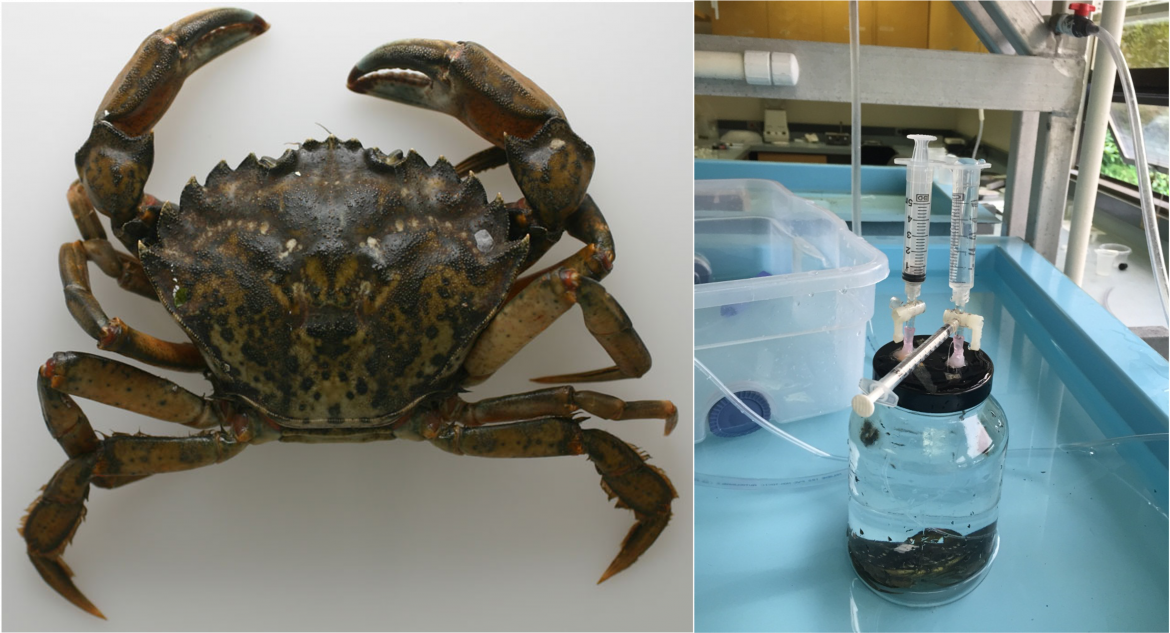
ABSTRACT
The green crab (Carcinus maenas) is an inshore species affected by intertidal zonation patterns, facing periods of emersion during low tide and submersion during high tide. During these periods of air and subsequent water exposure, these species can face physiological challenges. We examined changes in O2 consumption rate (ṀO2), and ammonia and urea excretion rates over sequential 14 h periods in seawater (32 ppt, control), in air and during recovery in seawater after air exposure (13°C throughout). At the end of each exposure, the anterior (5th) and posterior (8th) gills and the hepatopancreas were removed for measurements of oxidative stress parameters (TBARs and catalase in the gills and hepatopancreas, and protein carbonyls in the gills). ṀO2 remained unchanged during air exposure, but increased greatly (3.4-fold above control levels) during the recovery period. Ammonia and urea net fluxes were reduced by 98% during air exposure, but rebounded during recovery to >2-fold the control rates. Exchangeable water pools, rate constants of diffusive water exchange, unidirectional diffusive water flux rates (using tritiated water) and transepithelial potential were also measured during control and recovery treatments, but exhibited no significant changes. Damage to proteins was not observed in either gill. However, lipid damage occurred in the anterior (respiratory) gill after the air exposure but not in the posterior (ionoregulatory) gill or hepatopancreas. Catalase activity also decreased significantly in recovery relative to levels during air exposure in both the anterior gill and hepatopancreas, but not in the posterior gill. The crabs did not modify water metabolism or permeability. We conclude that ṀO2 was maintained but not enhanced during air exposure, while ammonia and urea-N excretion were impaired. As a result, all of these parameters increase greatly during re-immersion recovery, and oxidative stress also occurs. Clearly, emersion is not without physiological costs.